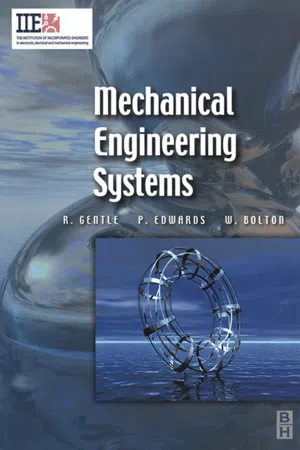Technology & Engineering
Real Gas Internal Energy
Real gas internal energy refers to the total energy contained within a gas due to the motion and interactions of its molecules. Unlike ideal gases, real gases experience intermolecular forces and occupy a finite volume, leading to deviations from ideal behavior. Understanding the internal energy of real gases is crucial for various engineering and technological applications, such as in the design of gas storage and transportation systems.
Written by Perlego with AI-assistance
Related key terms
Related key terms
1 of 4
Related key terms
1 of 3
3 Key excerpts on "Real Gas Internal Energy"
- eBook - ePub
- Paul W. Cooper(Author)
- 2018(Publication Date)
- Wiley-VCH(Publisher)
The internal energy of a substance is defined as the total quantity of energy that it possesses by virtue of the presence, relative positions, and movements of its component molecules, atoms, and subatomic units. A part of this energy is contributed by the translational motion of the separate molecules and is particularly significant in gases where translational motion is nearly unrestricted in contrast to the situation in liquids and solids. Internal energy also includes the rotational motion of molecules and of groups of atoms that are free to rotate within the molecules. It includes the energy of vibration between the atoms of a molecule and the motion of electrons within the atoms. These kinetic portions of the total internal energy are determined by the temperature of the substance and by its molecular structure. The remainder of the internal energy is present as potential energy resulting from the attractive and repulsive forces acting between molecules, atoms, electrons, and nuclei. This portion of the internal energy is determined by molecular and atomic structures and by the proximity of the molecules and atoms to one another. At the absolute zero of temperature all translational energy disappears, but a great reservoir of potential energy and a small amount of vibrational energy remain.The total internal energy of a substance is unknown, but the amount relative to some selected temperature and state can be accurately determined. The crystalline state and hypothetical gaseous state at absolute zero temperature are commonly used as references for scientific studies, whereas engineering calculations are based on a variety of reference conditions arbitrarily selected.7.4 Energy in Transition: Heat and Work
In reviewing the several forms of energy previously referred to, it will be noted that some are capable of storage, unchanged in form. Thus, the potential energy of an elevated weight or the kinetic energy of a rotating flywheel is stored as such until by some transformation they are converted, in part at least, to other forms.Heat represents energy in transition under the influence of a temperature difference. When heat flows from a hot metal bar to a cold one, the internal energy stored in the cold bar is increased at the expense of that of the hot bar, and the amount of heat energy in transition may be expressed in terms of the change in internal energy of the source or of the receiver. Under the influence of a temperature gradient, heat flows also by the bodily convection and mixing of hot and cold fluids and by the emission of radiant energy from a hotter to a colder body without the aid of any tangible intermediary. - eBook - ePub
- Richard Gentle, Peter Edwards, William Bolton(Authors)
- 2001(Publication Date)
- Newnes(Publisher)
Internal energy is the intrinsic energy of the fluid, i.e. the energy it contains because of the movement of its molecules.Joule’s law states that the internal energy of a gas depends only upon its temperature, and is independent of changes in pressure and volume. We can therefore assume that if the temperature of a gas increases, its internal energy increases and if the temperature falls, the value of internal energy falls.We will always be dealing with a change in internal energy, and we can show by applying the non-flow energy equation (see below, ‘The non-flow energy equation’) to a constant volume process that the change in internal energy is given by,where c v is the specific heat of the gas at constant volume and m is the mass.This expression is true for all the processes which can be applied to a gas, and will be used later.The non-flow energy equation
This is a very important expression, which we use later in non-flow processes In words, the heat energy supplied is equal to the work done plus the change in internal energy. This can be thought of as an expression of the first law with the internal energy change taken into account.The system
To study thermodynamics properly, we must know what we are dealing with and where the boundaries are, so that our system is defined.The gas in an engine cylinder forms a closed system bounded by the cylinder walls and the piston head. The processes we have been looking at have occurred without mass flow of the gas across these boundaries.On the other hand, if we move the boundary to encompass the complete engine so as to include the inlet and exhaust, there is a mass flow into and out of the system.• These are called non-flow processes .• This is called a steady flow process .Steady flow processes also occur in gas turbines, boilers, nozzles and condensers, wherever there is an equal mass flow in and out across the boundary of the system. It is traditional to show the boundary of a system on a diagram by a broken line. - eBook - ePub
Biomolecular Thermodynamics
From Theory to Application
- Douglas Barrick(Author)
- 2017(Publication Date)
- CRC Press(Publisher)
‡ Here we avoid using the phrase “internal energy of the surroundings” since the word internal seems closely connected to the system. It should be kept in mind that the labels “system” and “surroundings” are our own creation, and the quantities and laws of thermodynamics must remain valid no matter how we label.§ In fact, the association of the adjective “internal” with the energy of a system reflects an appreciation that there must be modes of energy storage within materials that are invisible on the macroscopic scale. Such invisible “internal” modes of energy storage provided support for the existence of atoms and molecules, and vice versa.† Note that some textbooks use the symbol E for internal energy.‡ In most of the calculations done in this chapter, work will only be of one form: expansion and compression against an opposing force.† In fact, Equation 3.8 demands that if q depends on path, w must also depend on path (in an offsetting way), because their sum does not depend on path.‡ In simple cases, the molecular models of statistical thermodynamics can be used to connect internal energy with measurable quantities like temperature (as is true for an ideal gas). But this model-dependent approach is outside the scope of classical thermodynamics.§ In simplest form, a device that lifts a weight against gravity.† Although φ is analogous to as a “force,” it need not have the same dimension as a true force (i.e., Newton’s). Rather, the dimensions of φ must combine with those of ξ to give units of energy, as is the case with F and x .†
Index pages curate the most relevant extracts from our library of academic textbooks. They’ve been created using an in-house natural language model (NLM), each adding context and meaning to key research topics.
Explore more topic indexes
Explore more topic indexes
1 of 6
Explore more topic indexes
1 of 4


